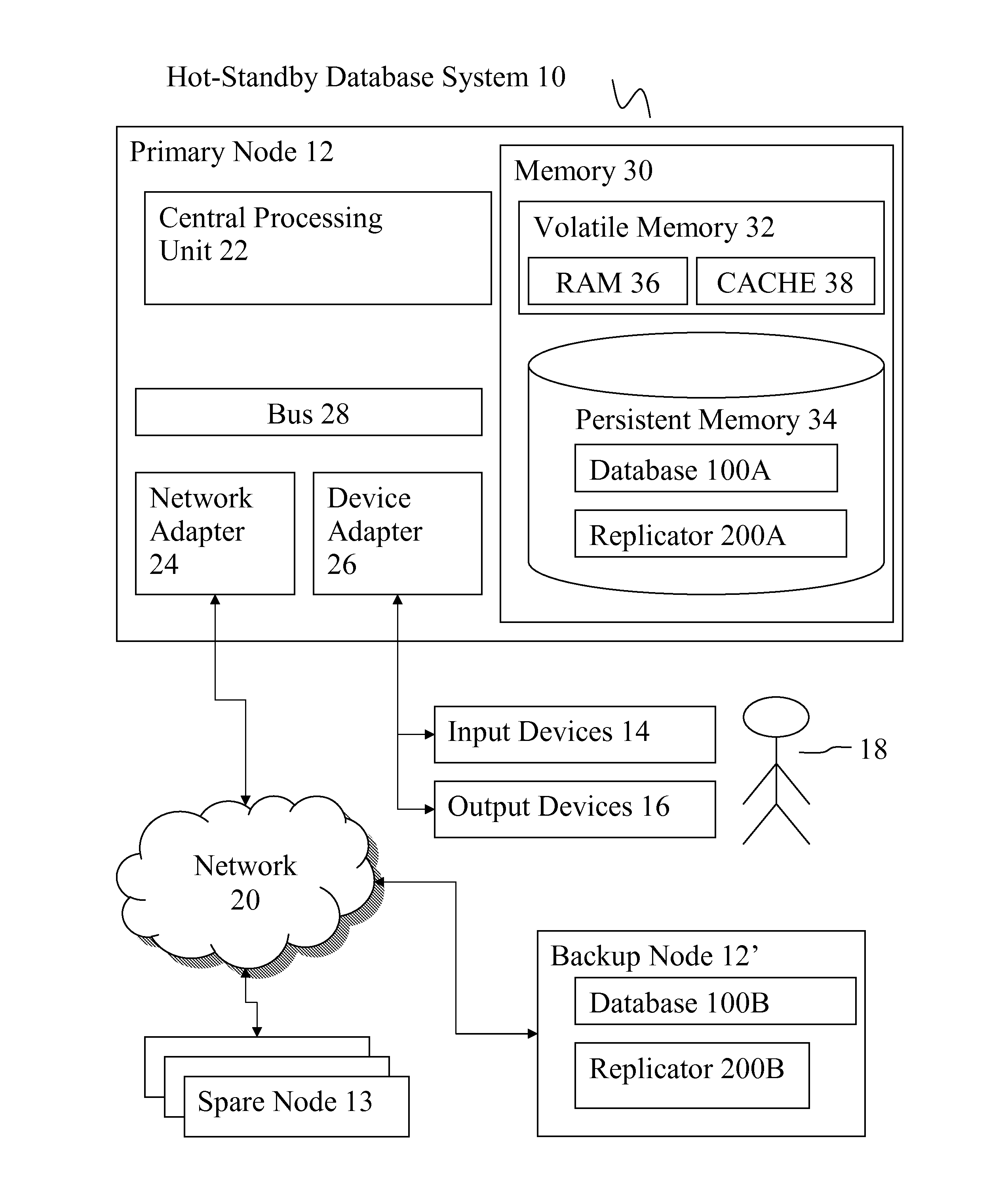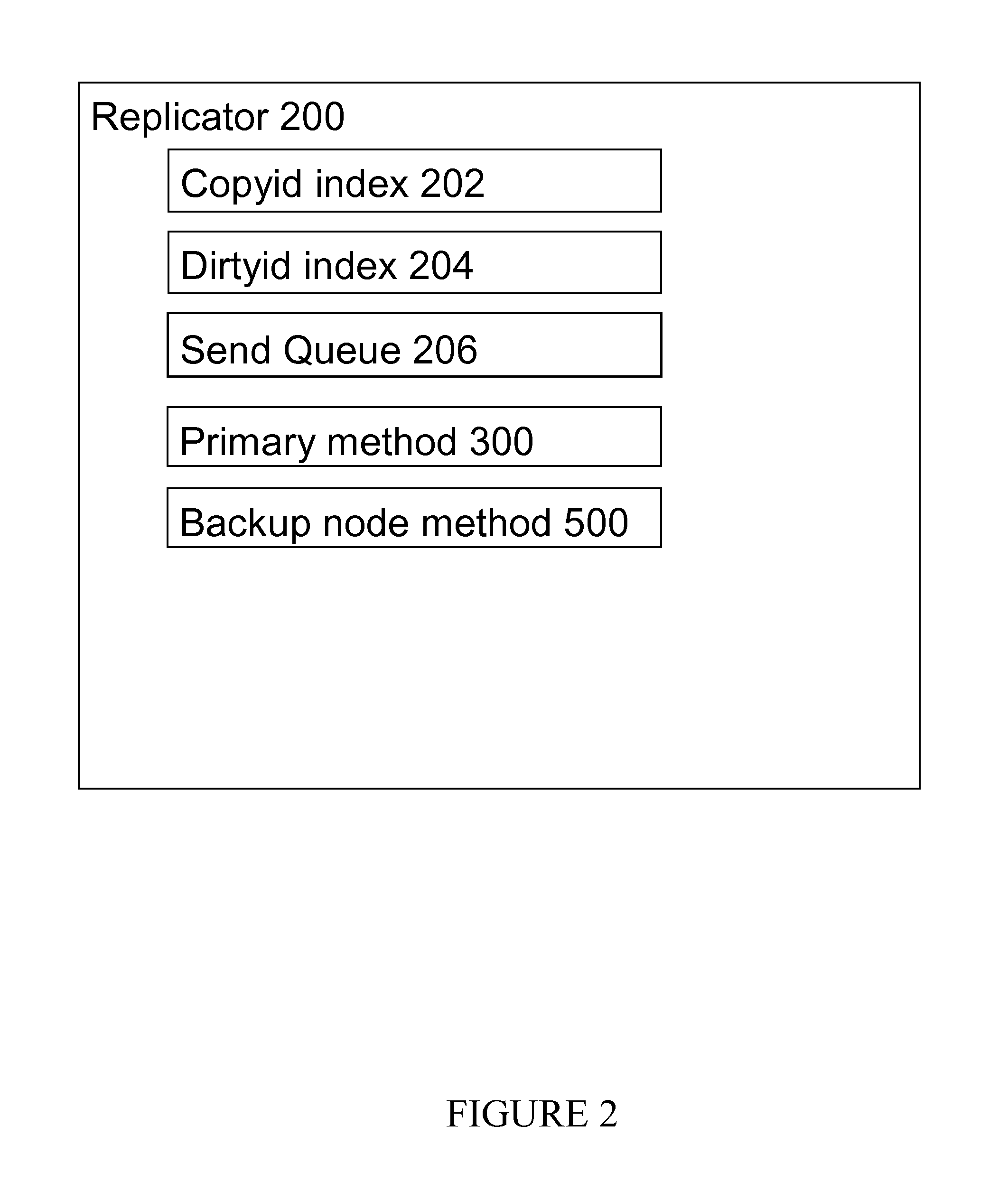Replication for on-line hot-standby database
a replicator and database technology, applied in database distribution/replication, error detection/correction, instruments, etc., can solve the problem of much smaller memory consumption in a primary node, and achieve the effect of reducing capacity, faster access times, and shortening transfer times
- Summary
- Abstract
- Description
- Claims
- Application Information
AI Technical Summary
Benefits of technology
Problems solved by technology
Method used
Image
Examples
Embodiment Construction
[0032]There are different ways to keep a backup node in synchronization with a primary node but in this publication, log replication (also known as log shipping replication) is considered. In log replication, a primary node stores each write transaction to its database and to a log record whereby the log records are further copied to a backup node. When a backup node receives log records it executes a REDO transaction for each log record received. A REDO transaction repeats the referenced transaction. In the embodiments, an HSB database is stored in main memory for fast data access because main memory is directly addressed by a computer processing unit (CPU) as opposed to indirect access and slower access speed from persistent storage. Fast memory access is not a property of HSB databases in particular but it applies to in-memory databases, which may support hot-standby functionality. Log records are typically stored in persistent storage. An in-memory database guarantees persistent...
PUM
 Login to View More
Login to View More Abstract
Description
Claims
Application Information
 Login to View More
Login to View More - R&D
- Intellectual Property
- Life Sciences
- Materials
- Tech Scout
- Unparalleled Data Quality
- Higher Quality Content
- 60% Fewer Hallucinations
Browse by: Latest US Patents, China's latest patents, Technical Efficacy Thesaurus, Application Domain, Technology Topic, Popular Technical Reports.
© 2025 PatSnap. All rights reserved.Legal|Privacy policy|Modern Slavery Act Transparency Statement|Sitemap|About US| Contact US: help@patsnap.com



